Point and click are one of the actions of a computer user moving a pointer to a certain location on a screen (pointing) and then pressing a button on a mouse or other pointing device (click). An example of point and click is in hypermedia, where users click on hyperlinks to navigate from document to document. User interfaces, for example graphical user interfaces, are sometimes described as "point-and-click interfaces", often to suggest that they are very easy to use, requiring that the user simply point to indicate their wishes. Describing software this way implies that the interface can be controlled solely through a pointing device with little or no input from the keyboard, as with many graphical user interfaces.

The Longest Journey is a magical realist point-and-click adventure video game developed by Norwegian studio Funcom for Microsoft Windows and released in 1999.

Myst III: Exile is the third title in the Myst series of graphic adventure puzzle video games. While the preceding games in the series, Myst and Riven, were produced by Cyan Worlds and published by Brøderbund, Exile was developed by Presto Studios and published by Ubi Soft. The game was released on four compact discs for both Mac OS and Microsoft Windows on May 8, 2001; versions for the Xbox and PlayStation 2 were released in late 2002. A single-disc DVD version was later released for Windows and Mac OS.

Runaway: A Road Adventure is a 2001 graphic adventure game developed by the Spanish company Pendulo Studios and published by Dinamic Multimedia. It follows the story of Brian Basco, an American college student on the run after he unwittingly saves a murder witness named Gina Timmins from assassination by the New York Mafia. Searching for clues about a mysterious crucifix linked to the murder, Brian and Gina embark on a cross-country journey through the United States while pursued by two Mafia hitmen. The player assumes the role of Brian and explores the game world while collecting items, solving puzzles and conversing with non-player characters.

Lula 3D is an adult adventure video game developed and published by cdv Software Entertainment for Microsoft Windows. It was released in Europe on June 22, 2005. It is part of the Lula video game series.

In Memoriam is an adventure video game for Windows and Mac OS developed by French studio Lexis Numerique. It uses alternate reality-style gameplay, in which the player receives emails from other in-game characters, including the game's main antagonist. The player needs to find information and clues to the games' puzzles on the Internet, both from real websites, and from specially-created websites that have been mixed in with other "real-world" domains. According to director Eric Viennot, the game was a commercial success, with sales above 300,000 units worldwide by late 2006.

The Moment of Silence is an investigative thriller adventure game developed in 2004 by German developer House of Tales.

Sherlock Holmes: The Case of the Silver Earring is a video game developed by Frogwares and published in 2004 for Microsoft Windows by Digital Jesters in Europe and Ubisoft in North America. While the game is "inspired by The Adventures of Sherlock Holmes", it uses an original plotline — set in London in 1897 — and allows the player to investigate a murder as Sherlock Holmes and Dr. John H. Watson. A version for Wii was also released in Europe in 2011. By 2010, Secret of the Silver Earring had sold 500,000 copies worldwide.
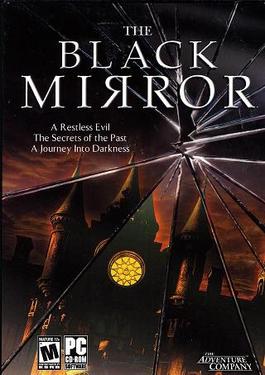
The Black Mirror is a third-person point-and-click horror adventure game developed in 2003 by Czech company Future Games. Its original name is Posel Smrti. The game features 150 locations and 5 hours of spoken dialogue. The Black Mirror became a commercial success, with 500,000 units sold worldwide by 2008. It was particularly successful in Germany, under publisher DTP Entertainment. Two sequels, Black Mirror II: Reigning Evil and Black Mirror III: Final Fear, were released. Additionally, a reboot titled Black Mirror was released in November 2017.
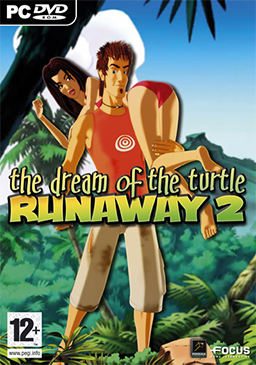
Runaway 2: The Dream of the Turtle is a 2006 graphic adventure game developed by the Spanish company Pendulo Studios and published by Focus Home Interactive. The sequel to Runaway: A Road Adventure, it follows protagonists Brian Basco and Gina Timmins as their vacation in Hawaii goes awry, sweeping up the two of them into a secret project by the United States military. The player controls Brian and explores the game world while collecting items, solving puzzles and interacting with non-player characters.

Atlantis II, known as Beyond Atlantis in North America, is a 1999 graphic adventure game developed and published by Cryo Interactive. The sequel to Atlantis: The Lost Tales, it follows the story of Ten, a mystical being that travels across time to defeat the Bearer of Dark. Players assume the role of Ten and solve puzzles in locations such as Ireland, the Yucatán Peninsula of Mexico and China.
Pendulo Studios S.L. is a Madrid-based video game developer founded in 1993 by Ramón Hernáez, Felipe Gómez Pinilla, Rafael Latiegui and Miguel Angel Ramos. Since the company's 1994 debut project, Igor: Objective Uikokahonia, it has specialized in graphic adventure games. Pendulo first achieved mainstream prominence in Spain via Hollywood Monsters (1997), which met with critical and commercial success in the country but was never released beyond Southern Europe.
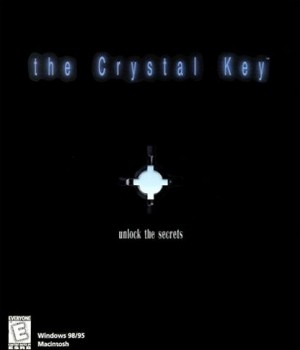
The Crystal Key is a 1999 graphic adventure video game developed by Earthlight Productions and published by DreamCatcher Interactive. A work of science fiction, it casts the player as an interstellar explorer on a quest to save Earth from Ozgar, a malevolent alien conqueror. The player uses portals to traverse multiple planets, including desert and jungle worlds, while collecting items and solving puzzles. The Crystal Key was conceived by John and Jennifer Matheson in the mid-1990s, and it underwent a five-year creation process hampered by problems with its technology. It was signed by DreamCatcher as part of the publisher's strategic push into the adventure game genre.

Dracula: Resurrection is a 1999 graphic adventure video game developed by Index+. Set in 1904 Transylvania, the game serves as a follow-up to Bram Stoker's novel Dracula. Seven years after the death of Count Dracula, Jonathan Harker's wife Mina finds herself mysteriously drawn back to Transylvania. Jonathan subsequently travels to Borgo Pass in an effort to rescue her. The player assumes the role of Jonathan and uses a point-and-click interface to solve puzzles and navigate the game's world, often with the help of an object called the Dragon Ring.
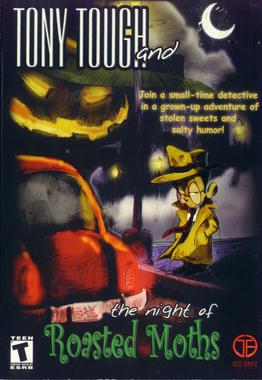
Tony Tough and the Night of Roasted Moths is a 1999 adventure game developed by Nayma Software.
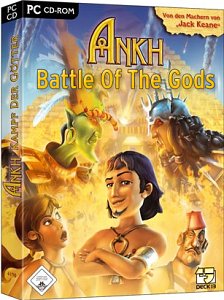
Ankh: Battle of the Gods is a third-person adventure video game, released in 2007 for the Windows and Macintosh computers, developed by Deck13 and published by BHV Software. As with Ankh and Ankh: Heart of Osiris, Ankh: Battle of the Gods utilises a modified version of the Ogre 3D graphics engine.

Edna & Harvey: Harvey's New Eyes is a point-and-click adventure game created by Daedalic Entertainment. The game was released in Germany on August 26, 2011. Harvey's New Eyes is a sequel to Edna & Harvey: The Breakout.
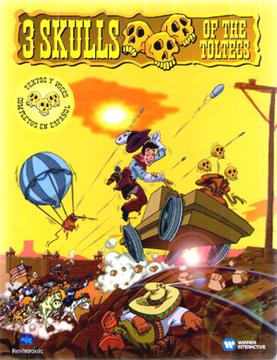
3 Skulls of the Toltecs is a point-and-click graphic adventure game designed by Revistronic for IBM PC compatibles and published by Warner Interactive Europe in 1996. The game uses a 3rd-person perspective, inventory-based puzzle solving, and horizontally scrolling cartoon graphics. 3 Skulls of the Toltecs sold 200,000 copies throughout Europe and 25,000 copies in Spain.
House of Tales Entertainment GmbH, trading as House of Tales, was a German video game developer based in Bremen. The company was known for its point-and-click adventure games.
Fenimore Fillmore's Revenge is a 2008 graphic adventure game developed by the Spanish company Revistronic. It is the third game in the Fenimore Fillmore series, following 3 Skulls of the Toltecs (1996) and The Westerner (2003). While its predecessors are cartoonish comedies, Fenimore Fillmore's Revenge features a darker tone and visual look. The game began development around May 2004. Following unofficial reports, the game was revealed in May 2005.
















